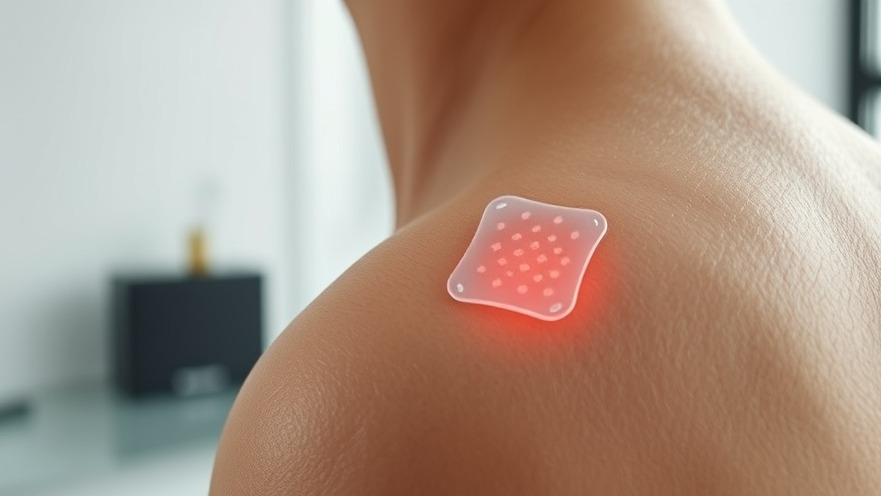
Revolutionizing Infection Detection with Smart Skin Sensors
In a groundbreaking advancement in medical technology, the smart skin sensor developed by researchers at the Universitat Rovira i Virgili (URV) marks a significant leap forward in the monitoring and diagnosis of skin infections. This innovative device offers real-time detection of temperature variations in the skin, providing a crucial early-warning system for health practitioners.
Understanding the Technology Behind the Sensor
The smart skin sensor functions through a thermoelectric system, which operates without batteries or external power sources. This autonomy is vital for health practitioners, as it allows for continuous monitoring in various medical and industrial environments. According to Eduard Llobet, a researcher at URV, the goal was to create flexible and adaptable devices that could conform to the body or other surfaces without the limitations of battery dependency.
Why Temperature Matters in Patient Care
In the realm of patient diagnostics, temperature serves as a key indicator for identifying infections and inflammatory conditions. Traditionally, healthcare professionals relied on infrared cameras and point sensors. However, these methods presented challenges, such as requiring patients to remain still for accurate readings and being limited in the area they could assess. With the smart skin sensor, there’s no need for immobilization; it creates a comprehensive “thermal map” of the skin that pinpoints areas in distress.
Validation through Testing: Proven Technology
The smart skin sensor has undergone rigorous validation through numerical simulations and hands-on experimental testing on human skin, including conditions that mimic perspiration. These tests revealed that the device can detect temperature variations as small as 0.4°C and react in under three seconds. This swift response could be critical for early detection of infections, enabling timely interventions that could lead to better patient outcomes.
Real-World Applications in Everyday Practice
For concierge health practitioners, knowing about the development of such smart technologies could be transformative. As they work to provide personalized care, integrating this technology into standard practice can help them identify and address potential health issues proactively. By employing smart skin sensors, patients may experience improved management of their health conditions, particularly those with chronic inflammatory diseases or post-surgical recovery needs.
Future Directions: What Lies Ahead?
The exploration of such advanced technologies suggests a future where continuous health monitoring becomes the norm rather than the exception. As research continues to improve the accuracy and adaptability of these sensors, the potential for their integration into at-home patient care devices is promising. This could empower patients to take an active role in their health management, allowing real-time data to inform both patients and healthcare providers.
Conclusion: Embrace the Change in Health Monitoring
The advent of smart skin sensors is not just a technological advancement, but a paradigm shift in how medical professionals approach patient care. It's essential for health practitioners to stay informed about these developments, as they could fundamentally change patient diagnosis and treatment. By embracing new technologies like the smart skin sensor, healthcare providers can ensure they are offering the best possible care to their patients.
 Add Row
Add Row  Add
Add 






Write A Comment